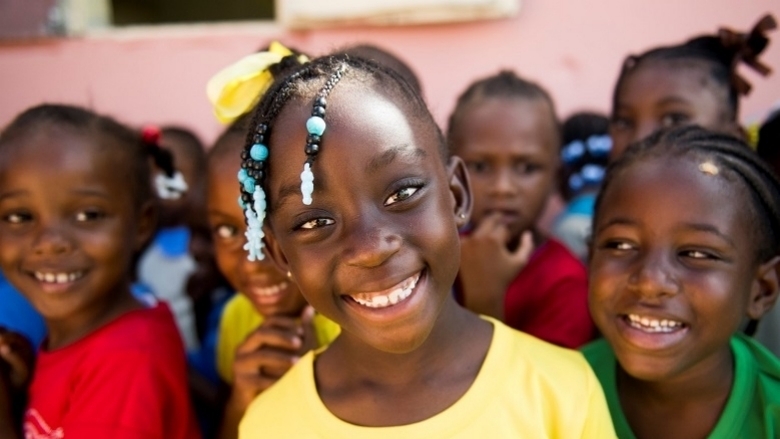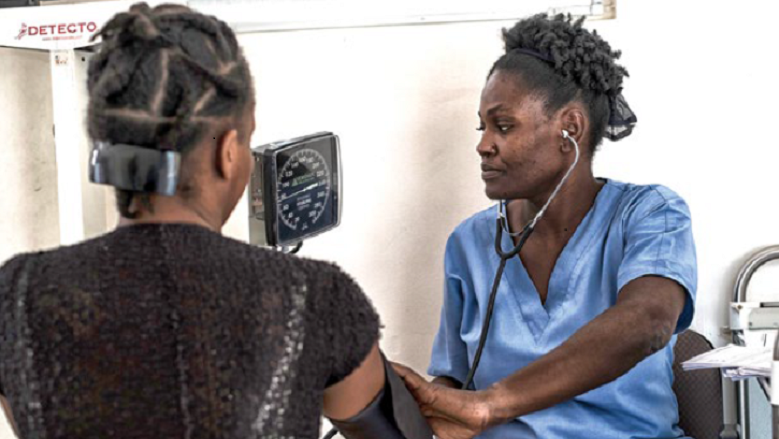Challenge
Haiti’s geography, people, and history provide it with many opportunities. However, a history of political instability, social unrest, and natural disasters has prevented the country from realizing its potential, keeping it as one of the poorest and least equal countries in the world. About 60% of Haiti’s population, or 6.3 million people, remain poor and 24%, or 2.5 million people, extremely poor (HHS 2012), with poverty highest in rural areas. Haiti’s economic growth has been weak, with GDP growth averaging only 1.3% between 2015 and 2018. Besides ongoing political instability and insecurity, key development constraints for Haiti include low physical and human capital, poor governance and institutions, and a weak contract between the Haitian State and its citizens.
Recurrent shocks, natural and man-made, have compounded Haiti’s many development challenges, and exacerbated its underlying drivers of poverty. One of the latest major natural disasters, category 4 hurricane Matthew, led to about 600 deaths, impacted 2.1 million people, and caused considerable damage to the southern peninsula and the northwest of the country. This resulted in a 32% loss of the country’s GDP. Prior to that in 2010, an earthquake killed an estimated 230,000 people, displaced 1.5 million, and resulted in 120% loss of GDP.
The persistent political instability and social unrest have hindered the country’s efforts to develop the institutional mechanisms and policy fundamentals to support economic and social progress, thus perpetuating the cycle of fragility and violence.
Approach
The focus of IDA support has been to respond to emergency needs and strengthen service delivery, while tackling some of the key institutional and policy challenges to build a more inclusive, resilient, and sustainable path to development. IDA supported reconstruction following major shocks through tailored emergency operations using grants and IDA Crisis Response Window funding.
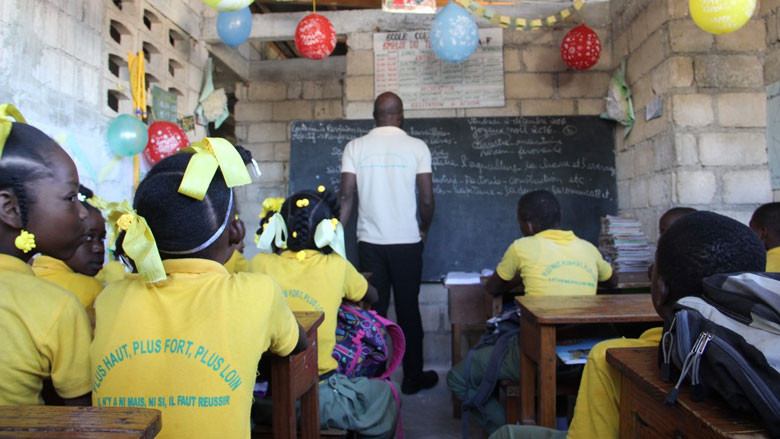
Results
World Bank Group (WBG) support has been pivotal to Haiti following the last two major disasters, the 2010 earthquake and 2016 hurricane, and has achieved significant results.
Human Development
The WBG engagement contributed to improvements in basic service delivery in education and health, with attention to closing geographical and income gaps, and significant achievements in combatting cholera, through combined support to health and water sectors.
· Expanded access to quality primary education to 240,000 children, 50% of whom are girls. IDA financing of 456,000 tuition waivers and set up a school feeding program, which provided hot meals and snacks to over 23,000 students in public basic schools. The tuition waiver mechanisms developed by the World Bank have been so successful and effective that they have been adopted by the government and other donors. Government capacity to improve quality of education has been strengthened, mainly through establishing quality assurance standards and information management systems.
· Cholera transmission was significantly interrupted, with no laboratory confirmed cases since January
· Essential health, nutrition, and population services benefited over 1.2 million people. Expansion of vaccination coverage, resulting in 640,000 children immunized. Increased prenatal care, with at least four visits for 40% of the women living in the Nord-Est, Centre, Nord-Ouest, and Sud departments.
Resilience
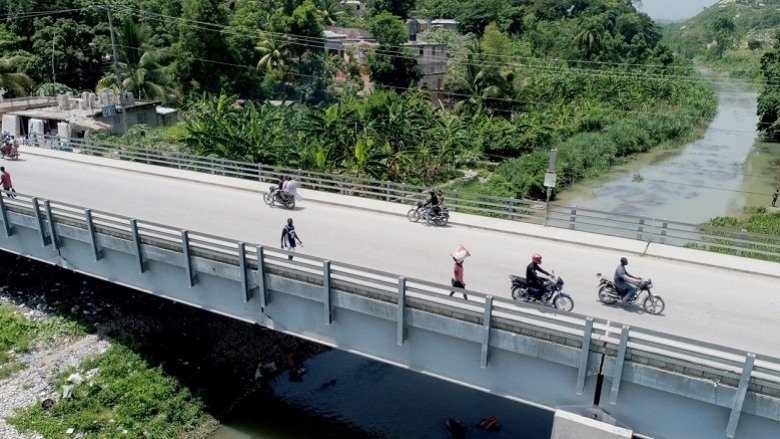
· More resilient infrastructure. About 226,000 people now have expanded access to electricity, and over 2 million people benefited from rehabilitation of more than 100km of critical road networks and over 122 small and large bridges for all-weather access to markets and services.
· Enhanced capacity to respond to disasters. 400 engineers and 15,000 masons were trained to build safe housing, and 450,000 buildings were assessed for structural damage to enhance disaster preparedness. A National Hydrometeorological Unit was created and strengthened for improved hydro-meteorological and climate information and services tailored to the needs of the civil protection service. Increased resources are now available to assess disaster risks, for example high-resolution maps for flooding risk assessments and assessments of community vulnerabilities.
· Technology has helped with assessment of disaster risks and planning. IDA supported establishment of the open-data platform HaitiData, which has helped share GIS (Geographic Information System) and cartographic data, and has been used by partners involved in risk and disaster management, urban planning, agriculture and food security, spatial planning, environmental management, infrastructure, statistics, tourism, topographic mapping, and thematic mapping.
Governance and Accountability
Strengthened efficiency, sustainability, and transparency in public services has been a crosscutting element of the World Bank’s work in Haiti. IDA has been instrumental in supporting institutional development by developing evidence-based data. This data serves as a basis for policy dialogue on sectoral organization, resource use, and effectiveness. Following major disasters, government’s basic functions of payment were restored, and equipment and capacity building were provided to government entities to continue functioning.
Bank Group Contribution
The ongoing World Bank portfolio in Haiti comprises 20 active projects for a total committed amount of $866.46 million. The sectors covered include energy, education, health, agriculture, water and sanitation, private sector, tourism and culture, infrastructure and institutional strengthening, urban community driven development, and disaster risk management. This is complemented by nearly US$150 million from trust funds that support the implementation of these operations.
The International Finance Corporation’s (IFC) portfolio comprises 11 projects, with an initial commitment of US$116 million (including US$45 million in mobilization), and a current outstanding balance of US$42.7 million (including US$11.7 million in mobilization). IDA is closely collaborating with IFC to support renewable energy, agribusiness, and financial services. Together, the WBG is leveraging the IDA Private Sector Window (PSW) to de-risk the private sector and promote investments in Haiti. Three IDA PSW projects were approved in Fiscal Year 19, including Ayiti Leasing, Sogesol, and Caibbean Bottling Company, totaling US$14 million in the financial services and beverage industries. MIGA is exploring opportunities to support the country with both its traditional political risk insurance guarantees, as well as through the IDA PSW as private sector demand materializes.
Despite challenges, the WBG has been able to maintain a strong program in Haiti. Allocation of additional IDA resources has helped enhance the ambition and scale of our support. The operations pipeline includes new initiatives (a Catastrophe Deferred Drawdown Option – CatDDO - and Regional Aviation Operation) to provide Haiti with an expanded range of WBG instruments.
Partners
The WBG works closely with development partners in Haiti to align engagements and financing with the country priorities. The partnerships with United Nations agencies as well as with the United States Agency for International Development, the Center for Disease Control, World Health Organization, and Canada are yielding positive outcomes on health and education. Similarly, close collaboration with the Inter-American Development Bank is helping close the gaps in education access and quality as well as extend coverage of water and sanitation. The disaster response agenda is seeing some positive developments thanks to the close collaboration with Japan, the United Kingdom, and United Nations Development Programme.
Moving Forward
The World Bank Group will continue to support Haiti through its ongoing program, which is closely aligned with the government’s priorities and focusing on the following objectives: (i) inclusive growth by supporting the development of greater economic opportunities beyond Port au Prince; (ii) human capital, aimed at supporting poverty reduction through investments in education and health, and (iii) strengthening resilience to help Haiti prepare for and prevent natural disasters.
Going forward, the World Bank will focus on engagement with higher potential for long-term, sustainable impact. The approach will be driven by selectivity, integrated territorial approach, and simplification of the design and delivery mechanisms to adapt to the fragile context in Haiti. The WBG has been deploying new operational mechanisms, such as working with third party implementers to achieve faster and better results while continuing to build local capacity. Similarly, the WBG is taking institutional capacity building to the decentralized, community levels, and stepping up local engagement for much more direct impact for beneficiaries; also promoting local small and medium enterprises and local firms in the contracting processes.
To improve the effectiveness of the state, the WBG will continue to support transparency and accountability, including in public financial management. The WBG will seek to strengthen institutions and government capacity to produce key data and set evidence-based priorities. The WBG also aims to improve fiscal sustainability through strengthening fiscal reporting and accountability and increasing the capacity to finance basic service delivery. Focus also remains on promoting a productive dynamic between the state and citizens to contribute to reducing fragility.
A combination of financial and knowledge services and instruments will be used to implement the program, including IDA financing, trust funds, guarantees, analytical work, just-in-time advice, short-term technical assistance, IFC investments, and advisory services, leveraging the IDA PSW, Regional IDA lending with the Caribbean, and a CatDDO for strengthening resilience.
Beneficiaries
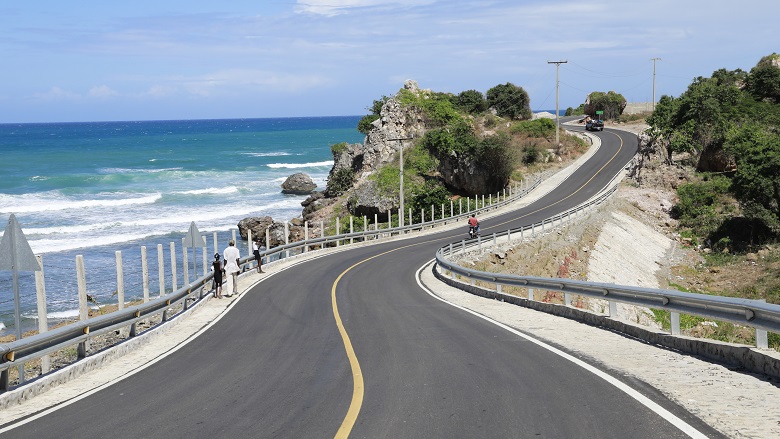
Last Updated: Jan 08, 2020
